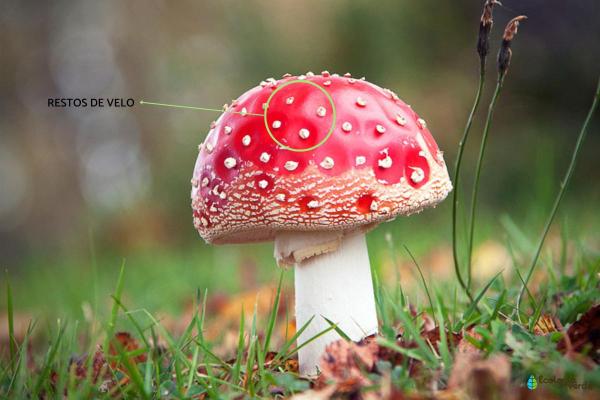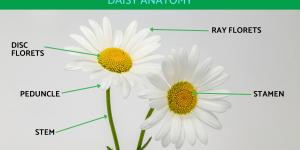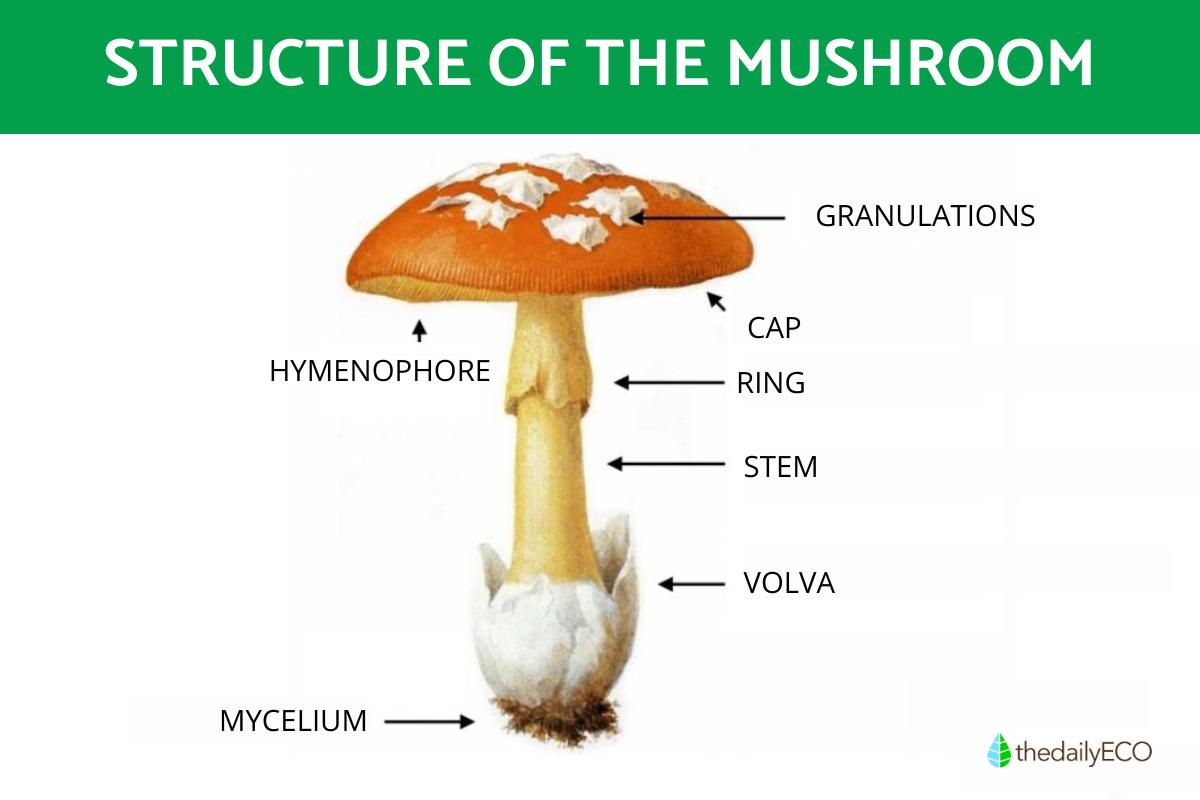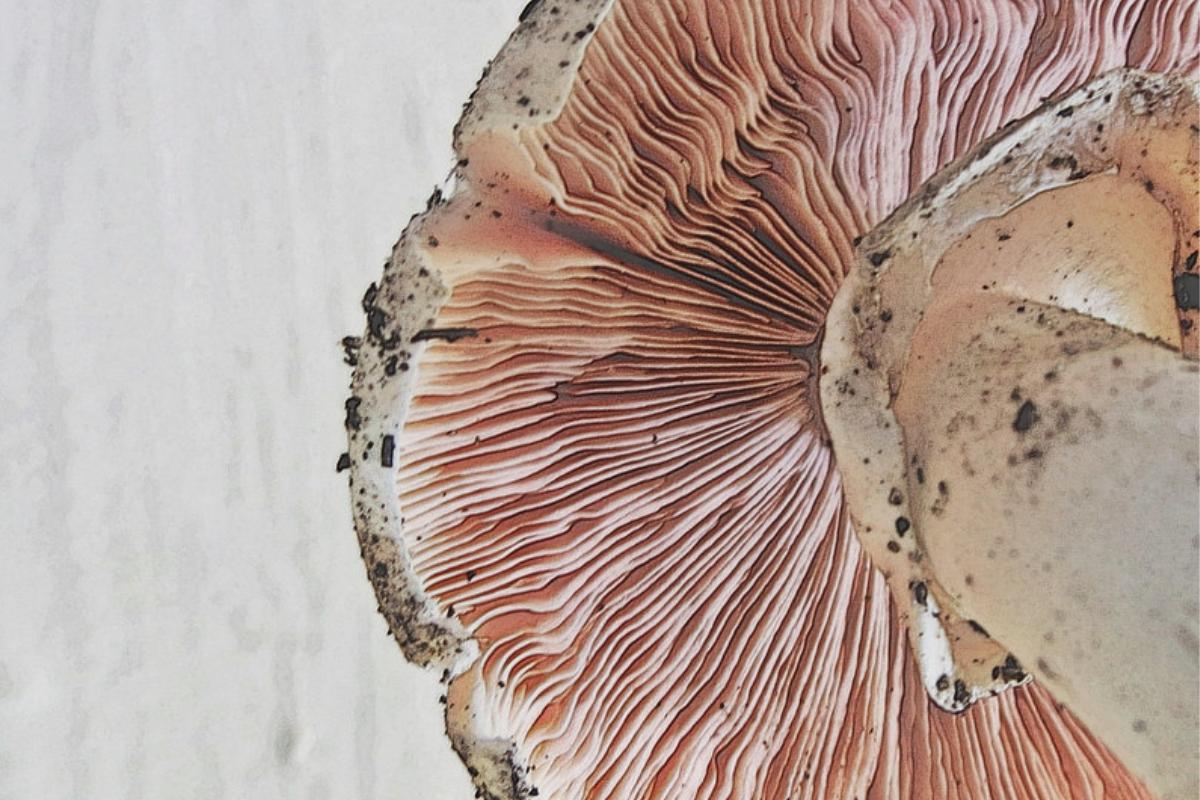What Are the Different Parts of a Mushroom?


While many appreciate mushrooms primarily for their culinary uses, their significance extends far beyond the kitchen. These intriguing organisms play essential roles in our ecosystems, aiding in processes like decomposition and forming symbiotic relationships with plants. But beyond their utility, what are mushrooms made of? Beneath their varied shapes and hues, mushrooms consist of a complex assembly of parts, each with its own function and story.
In this article by thedailyECO, we are going to explore the different parts of the mushrooms and the roles they play in the circle of life.
What are mushrooms?
Mushrooms are the fruiting bodies of certain fungi, serving as the reproductive structures that produce spores. They belong to the kingdom Fungi, a group of organisms distinct from plants, animals, and bacteria.
Mushrooms play a crucial role in ecosystems as decomposers, breaking down organic matter and recycling nutrients back into the soil. They can also form symbiotic relationships with plants, enhancing nutrient absorption through their roots.
Mushrooms vary widely in shape, size, color, and habitat. They typically consist of a stem (stipe), a cap (pileus), and gills or pores underneath the cap, where spores are produced. Not all fungi produce mushrooms, and not all mushrooms conform to this typical structure; some have unique forms and reproductive strategies.
To learn more about the fungi kingdom, be sure to read this other article.
Cap (Pileus)
Termed "pileo," the mushroom cap is the upper, wider section and a culinary focal point. It's the visible part above ground and is widely used in gastronomy for its versatility.
The main function of the cap is to protect the spore-producing structures beneath, called the hymenium. The cap's colors and scents also attract insects for spore dispersal. Some mushrooms, like morels, use caps for energy production, while others blend into surroundings for survival.
The cap's outer surface has a waterproof layer, the cuticle, with textures like smoothness, roughness, or scales. This cuticle can sometimes detach, adding variability.
Furhteremore, the cap's shape varies from umbrella-like to unusual forms like convex, flat, funnel-shaped, conical, or irregular. Sizes range from tiny buttons to large plates, adapting to the mushroom's needs.
During growth, caps often enfold the stem, unfurling as they mature. Shapes include flared, conical, convex, depressed, globose, flattened, or ovoid. Species identification also considers cap edges, which can be striated, grooved, cracked, wavy, appendicular, or have a woolly texture.
Do not miss this other article, where we explore the structure of fungi.

Hymenium
Nestled on the underside of the mushroom's cap is the hymenium, a microscopic layer that plays a crucial role in the mushroom's life cycle by serving as the site for spore production.
It is important to note that the spores don't directly grow on the hymenium. Instead, they form on specific structures known as the hymenophore.
This region can take on various forms, with gills being the most common in many mushrooms. Gills are thin, blade-like extensions that spread outward from the cap's underside, providing a large surface area for spore production.
As the spores mature, they develop on the surface of the hymenium, which lines these gills. The hymenium can be seen as a layer where spores originate. Once mature, the spores detach and can be carried by the wind, potentially germinating and giving rise to new mushrooms in different locations.
While the hymenium and gills work together in spore production, it's important to recognize their distinct roles. The hymenium is where spores originate, and the hymenophore, especially in the case of gilled mushrooms, serves as the platform for spores to develop and disperse.
It's important to note that not all mushrooms feature gills. The mushroom kingdom showcases a diverse array of reproductive structures within the hymenium. Gills represent just one possibility; others include pores, spines, or a smooth surface on the underside of the cap.
For instance, mushrooms with pores exhibit a porous surface beneath the cap, releasing spores through these openings. Those with spines have elongated, tooth-like structures instead of traditional gills. Moreover, certain mushrooms, like morels, present a honeycomb-like structure on the underside of the cap. In essence, the presence and nature of reproductive structures within the hymenium can vary widely among different mushroom species.

Stem (Stipe)
Also referred to as the "stipe," the mushroom's stem is a somewhat tubular structure that provides support to the cap.
Its primary role is to elevate the cap, facilitating the dispersion of spores into the surrounding environment. In comparison to the cap, the stem is typically more fibrous and possesses a sturdier texture.
The insertion of the stem into the cap can be classified as "central" when it occurs in the middle, or "eccentric" when it takes place on the periphery. Identification is further nuanced by considering aspects such as color, size, and overall appearance. Stems may exhibit varying characteristics, appearing solid or hollow, and adopting shapes like filiform, slim, cylindrical, thick, sinuous, lumpy, or bent.
Remarkably, the stem's presence may be minimal or entirely absent in some mushrooms, giving rise to the term "sessile." When the stem is notably reduced, the mushroom is described as sessile, adding an extra layer of diversity to the fascinating world of mushrooms.
Volva
The volva of a mushroom is essentially a remnant of the universal veil that encases the entire mushroom when it is young.
As the mushroom grows, it breaks free from this veil, leaving behind parts of it at the base of the stalk, which is what we refer to as the volva.
The presence, shape, and characteristics of the volva are key features in distinguishing between mushroom species. The volva can take on various forms, ranging from a cup-like structure to a series of loose, flaky pieces, or even a sack-like appearance surrounding the mushroom's base.
Its visibility and structure can significantly vary not just among different species but also due to environmental factors and the mushroom's growth stage.

Ring (Annulus)
The ring (annulus) is a remnant of the partial veil that initially covers and protects the developing gills or pores on the underside of the mushroom cap. It is commonly found around the stem.
This veil ensures that the delicate parts of the mushroom are protected from environmental hazards and potential damage as the mushroom prepares to release its spores.
As the mushroom reaches maturity and its cap expands, the partial veil tears, revealing the hymenophore beneath. The remnants of this veil often remain as a skirt-like ring around the mushroom's stem, a feature known as an annulus.
It is relevant to note that the ring can be permanent or temporary, and may vary in appearance from mushroom to mushroom.
Spores
Spores are microscopic, reproductive cells produced by mushrooms and other fungi species, as part of their life cycle.
Unlike seeds in plants, spores are unicellular and can be produced in vast numbers, offering a means for fungi to reproduce and disperse over a wide area. When conditions are favorable, these spores germinate, leading to the growth of new fungal organisms.
Spores are typically released into the environment from specialized structures of the fungus. In mushrooms, these structures are often located on the underside of the mushroom cap, within the gills, pores, or teeth, depending on the species. The method of spore release and the characteristics of the spores themselves, such as their color, shape, and size, are critical for the identification of mushroom species.
Interestingly, spores are capable of remaining dormant for extended periods until they land in an environment suitable for growth.
Be sure not to miss this other article, where we explore the difference between fungi and mushrooms.
If you want to read similar articles to What Are the Different Parts of a Mushroom?, we recommend you visit our Facts about nature category.
- Alonso J. Fundamental aspects for the identification of mushrooms . Available at: http://www.smlucus.org/UserFiles/Files/curso/2IDENTIFICACION_DE_LAS_SETAS.pdf
- The natural home . Available at: http://www.elhogarnatural.com/Morfoligiasetas.htm








